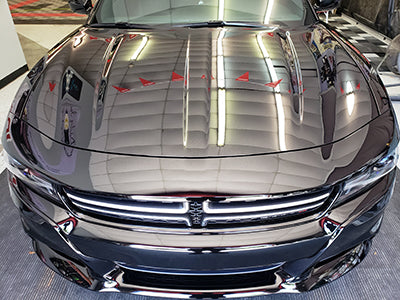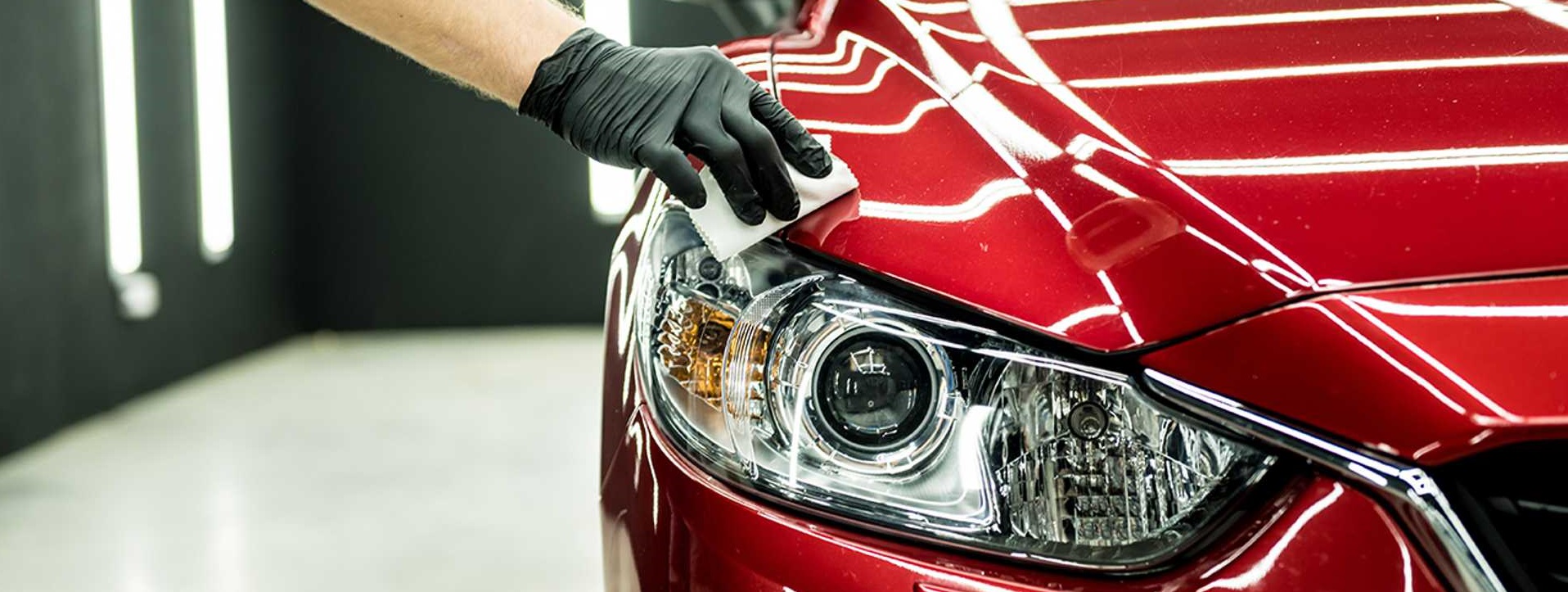Protect Your Car from the Elements with Ceramic Coating Technology
Protect Your Car from the Elements with Ceramic Coating Technology
Blog Article
Ceramic Covering vs. Typical Wax: Which Provides Better Long-Term Protection?
The debate between ceramic layers and traditional wax for vehicle security has actually amassed substantial interest amongst auto enthusiasts and professionals alike. While both satisfy of securing paint, their distinctions in toughness, application, and long-lasting upkeep prices might affect a customer's selection. Ceramic coatings flaunt superior long life and resistance to ecological variables, yet the intricacy of their application questions concerning accessibility and usefulness. As we check out these contrasting choices, it ends up being necessary to think about not only the immediate advantages however additionally the implications for vehicle treatment in time.
Overview of Ceramic Coating
Ceramic layer has gained substantial popularity amongst automotive fanatics and detailers alike because of its innovative protective high qualities. This innovative innovation is designed to produce a durable, hydrophobic guard over a car's paint surface area, considerably improving its resistance to environmental pollutants such as dust, UV rays, and chemical stains. Unlike standard wax, which provides a short-lived layer of protection, ceramic finishes bond at a molecular level with the paint, supplying long-lasting sturdiness-- often extending beyond two years with proper upkeep.
The application procedure involves careful prep work of the lorry's surface, including cleansing and brightening to make sure ideal attachment. Once used, the coating cures to develop a durable layer that not just includes depth and gloss to the paint but also simplifies upkeep. With its hydrophobic residential properties, ceramic covering permits water and dust to glide off even more quickly, decreasing the frequency of laundries and lessening the risk of swirl marks.
Furthermore, ceramic finishes are readily available in various formulations, enabling customers to select products customized to their certain requirements and preferences. In general, ceramic covering stands for a substantial innovation in paint defense innovation, providing exceptional performance contrasted to standard alternatives.
Review of Standard Wax
Typically concerned as a staple in automobile care, wax acts as a prominent selection for those looking for an uncomplicated technique to enhance and shield their automobile's paint - ceramic coating. Automotive wax commonly makes up all-natural active ingredients, such as carnauba, or synthetic substances, made to develop a protective layer externally of the paint. This layer not just improves the lorry's gloss and beam but likewise offers an obstacle against ecological contaminants
The application of wax is usually easy to use, making it available for both experts and do it yourself fanatics. It can be applied by hand or equipment, allowing for flexibility in the detailing procedure. As soon as applied, wax calls for a treating duration, after which it solidifies to develop a protective covering. Wax is additionally understood for its ability to drive away water, promoting a beading result that aids in the prevention of water spots and rust.
Nevertheless, while wax is reliable for boosting the aesthetic charm of a vehicle, it is very important to keep in mind that the protection it provides may require a lot more regular reapplication contrasted to alternate products, such as ceramic finishings. Overall, standard wax continues to be a preferred option for those prioritizing simplicity of use and instant visual renovation.
Resilience and Durability Comparison
While both ceramic layers and traditional wax offer protective benefits for automotive paint, their resilience and long life vary significantly. Traditional wax, normally made from all-natural carnauba or artificial polymers, usually supplies a safety layer that our website lasts about 3 to 6 months. This relatively short lifespan necessitates regular reapplication to keep optimal protection.
In contrast, ceramic coverings are engineered from advanced nanotechnology, forming a covalent bond with the paint surface. This causes a durable, hydrophobic layer that can withstand for 2 to five years, depending upon the product and environmental problems. The remarkable durability of ceramic finishes is credited to their chemical framework, which supplies boosted resistance to scratches, UV rays, and oxidation.

Protection Versus Ecological Factors
Protecting a lorry's paint from ecological variables is important for maintaining its appearance and worth in time. Automobiles are frequently exposed to a range of components, including UV rays, bird droppings, tree sap, acid rain, and roadway crud, every one of which can endanger the honesty of the paintwork.
Ceramic layers offer a durable defense versus these environmental aggressors. Unlike standard wax, which can weaken quickly under UV exposure, ceramic finishings form a durable, hydrophobic layer that stands up to the dangerous results of sunshine and toxic wastes. This advanced innovation produces a chemical bond with the lorry's surface, using premium protection that lasts for several years, also in severe conditions.
In contrast, ceramic finishings preserve their protective qualities longer, dramatically lowering the danger of paint damage and ensuring that the automobile preserves its aesthetic appeal. As an outcome, ceramic coverings are increasingly identified as the exceptional choice for long-term defense versus environmental variables.
Application and Maintenance Differences
The approaches of application and subsequent upkeep for ceramic layers and conventional wax vary dramatically, influencing the overall user experience and performance of each product. Ceramic finishes need an even more elaborate application procedure, normally including surface prep work that consists of washing, decontaminating, and brightening the car. Once the surface prepares, the ceramic finish is applied in a regulated environment, commonly requiring professional proficiency to make sure correct curing and bonding to the paint.

While both items boost vehicle appearance, the longer-lasting protection offered by ceramic finishes might warrant their first investment, regardless of the more requiring application process. Alternatively, traditional wax look at this web-site stays a preferred selection for those seeking an easier, albeit temporary, option.

Conclusion
In verdict, ceramic finishes show considerable advantages over standard wax in regards to toughness and ecological defense. With a lifespan prolonging two to five years and superior resistance to UV rays, official site dirt, and chemical discolorations, ceramic finishings provide a more effective solution for lasting vehicle upkeep. Although the application procedure might need specialist know-how, the resulting expense savings and decreased frequency of reapplication emphasize the worth of ceramic layers for those looking for ideal car protection.
The discussion between ceramic finishings and conventional wax for lorry defense has actually gathered significant focus among automotive fanatics and professionals alike. Unlike traditional wax, which supplies a short-term layer of defense, ceramic finishes bond at a molecular degree with the paint, using resilient sturdiness-- often expanding past 2 years with proper upkeep.
While both ceramic finishes and traditional wax deal protective advantages for automotive paint, their longevity and durability differ dramatically. For automobile fanatics seeking long-lasting security, ceramic finishes present an engaging benefit over traditional wax items.
In final thought, ceramic layers demonstrate considerable benefits over standard wax in terms of durability and environmental security.
Report this page